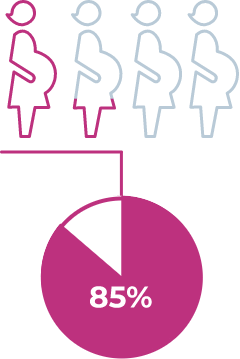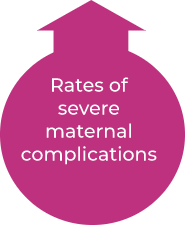Childbirth is a common, resource-intensive reason for a hospital stay
Childbirth is the most common reason for an inpatient stay in the United States and is associated with substantial resource use.2-4
More than 1 in 4 deliveries in the US are induced5

Up to 85% of induced labors require cervical ripening6







